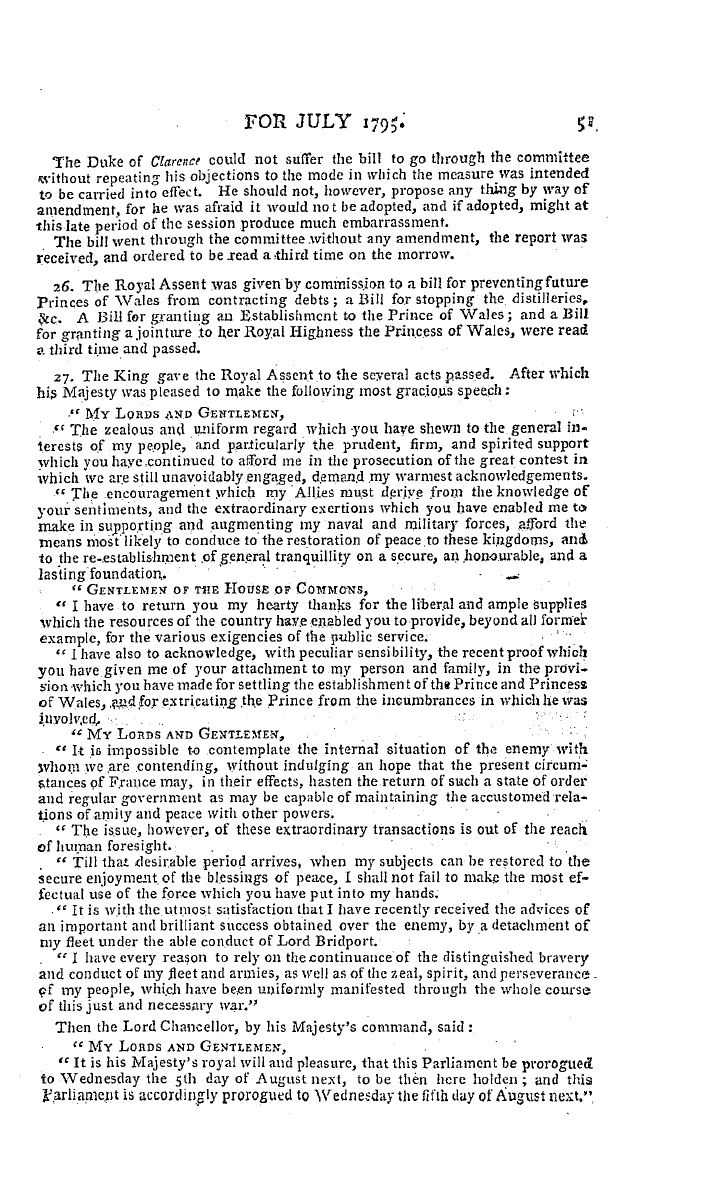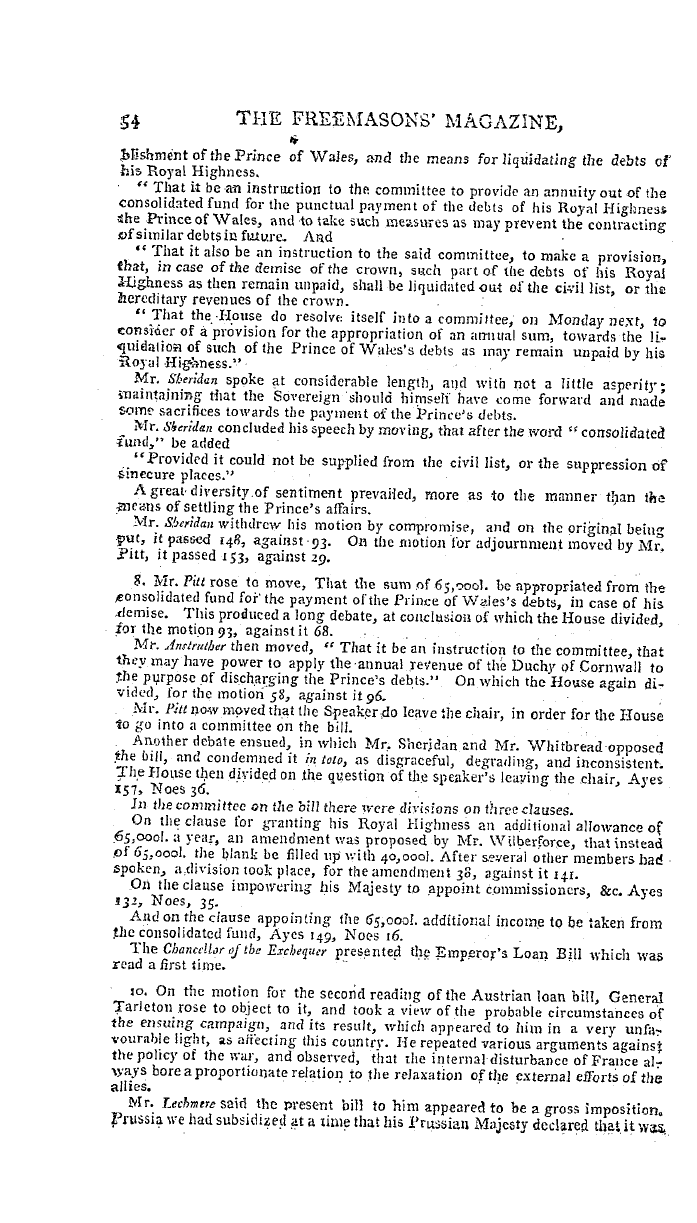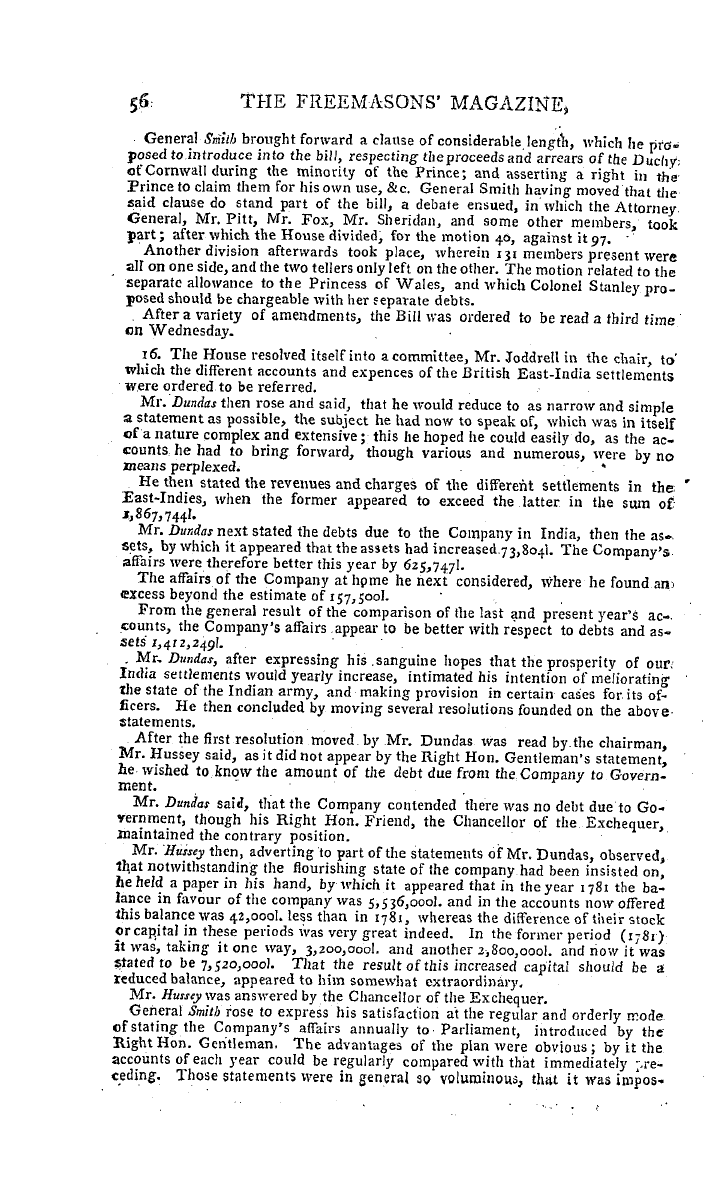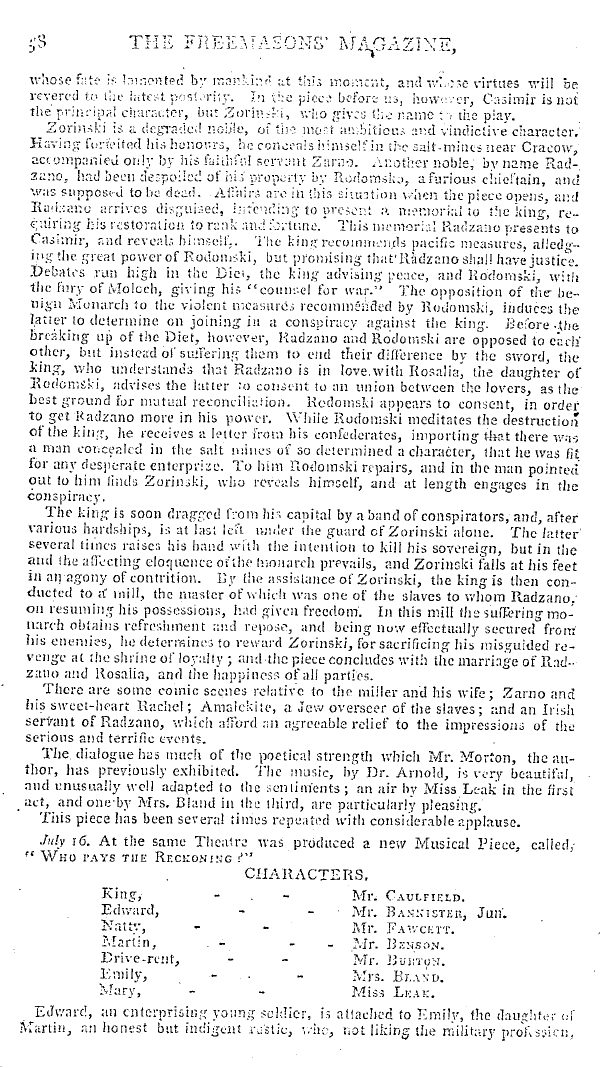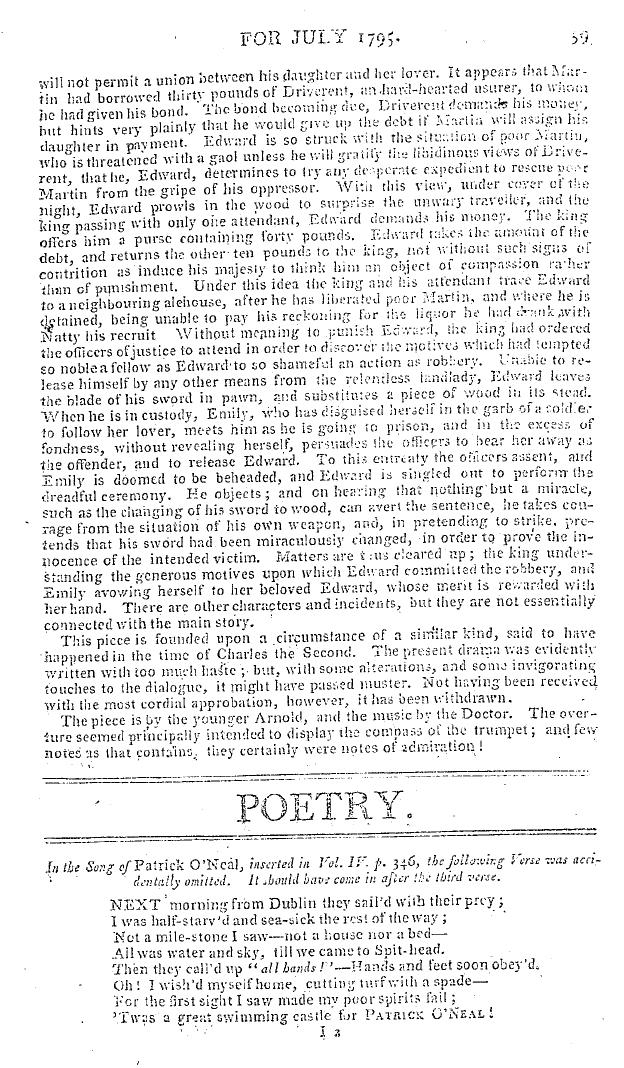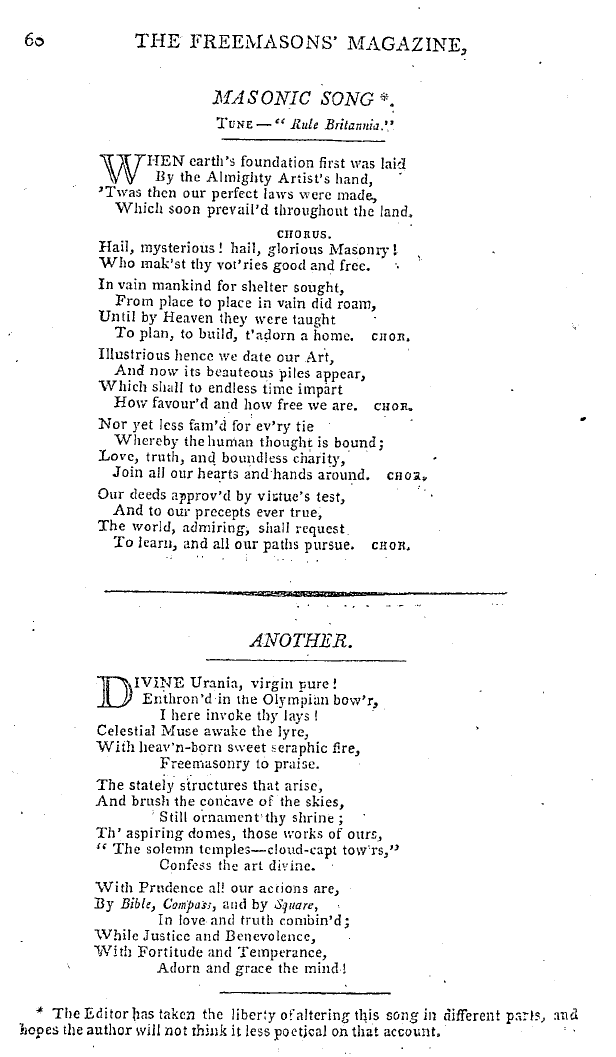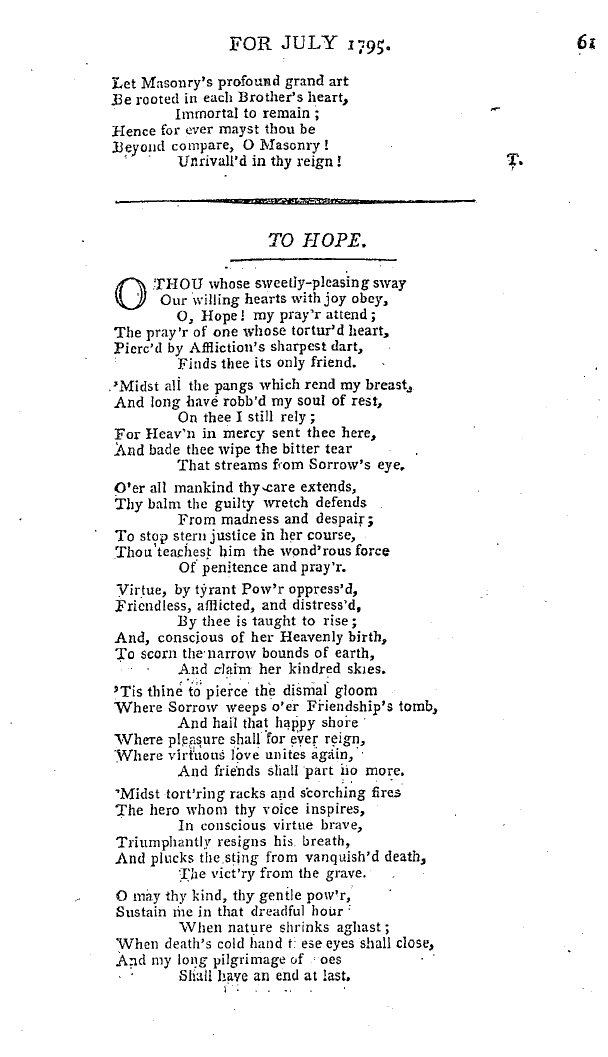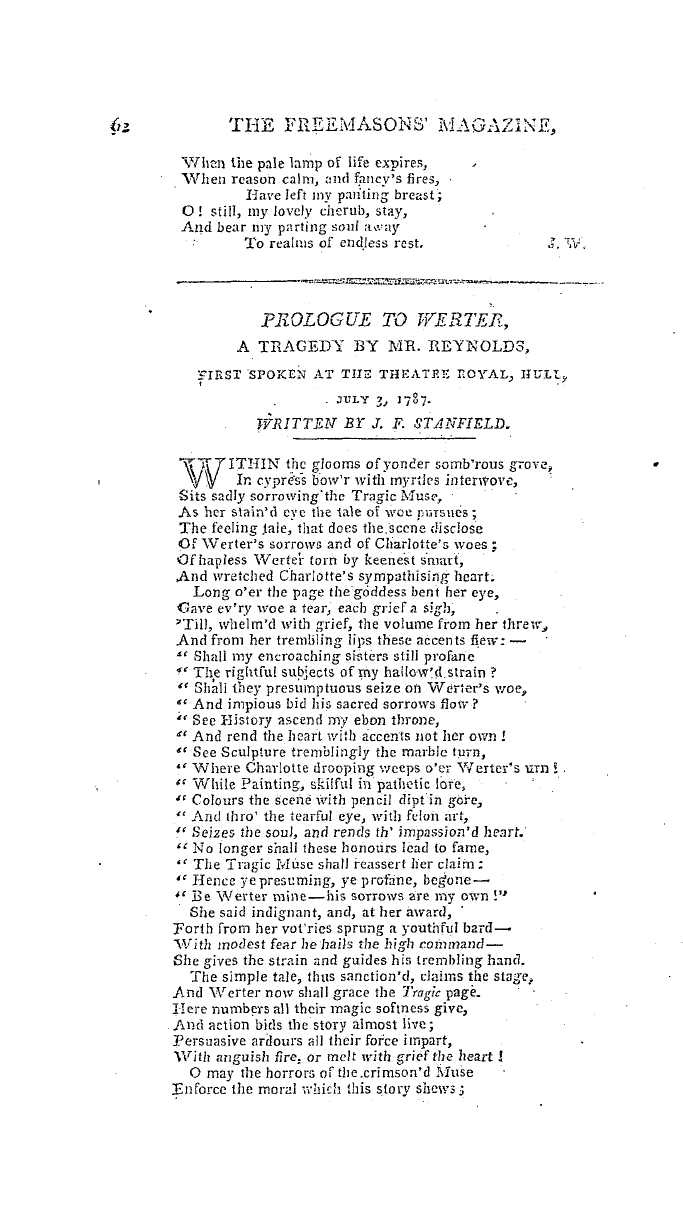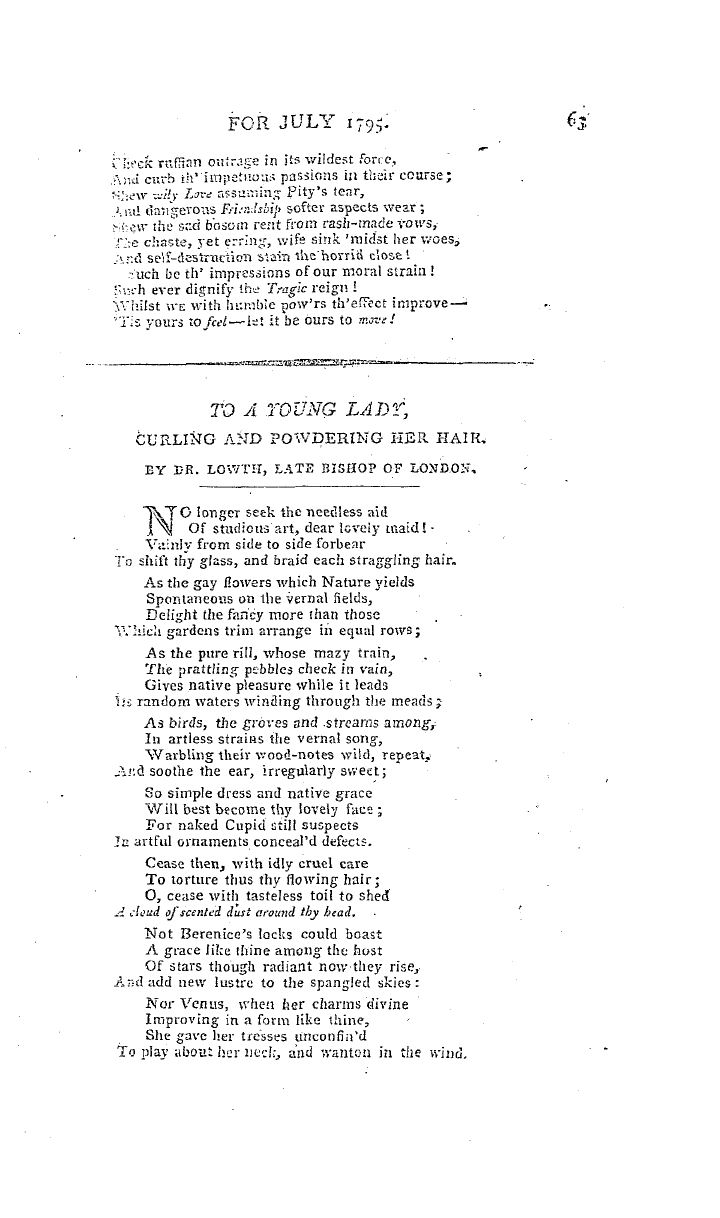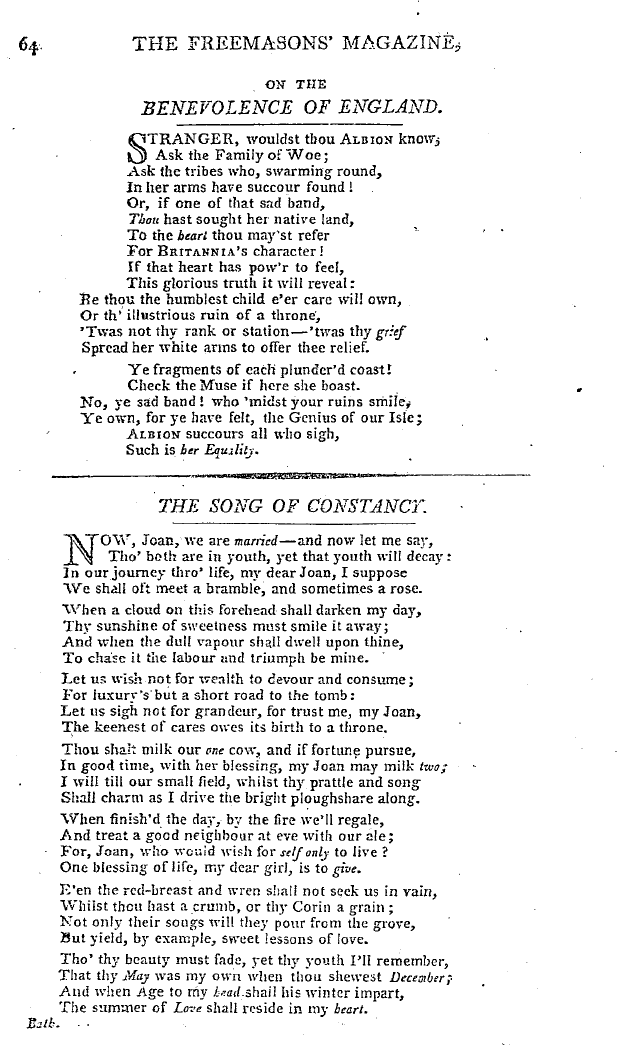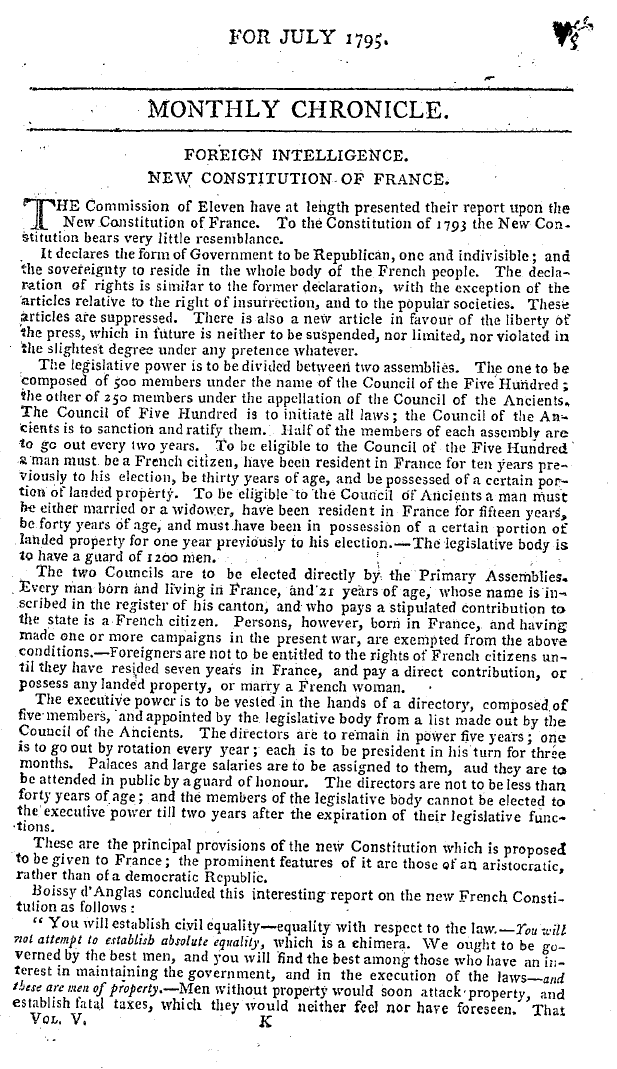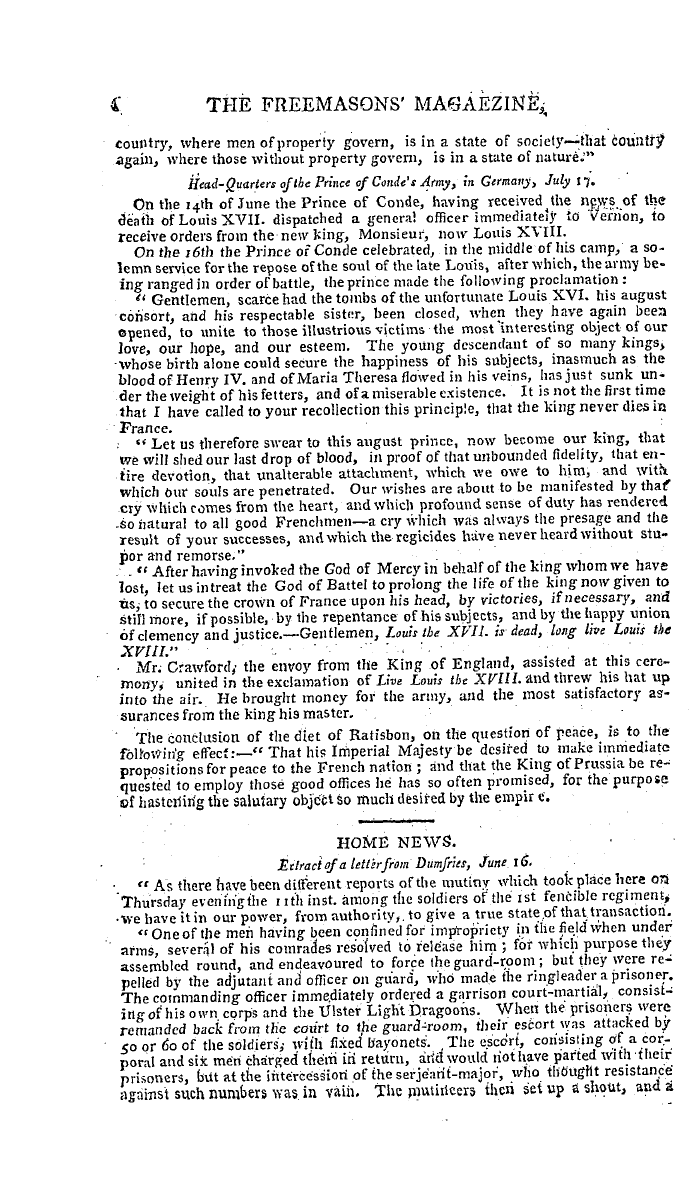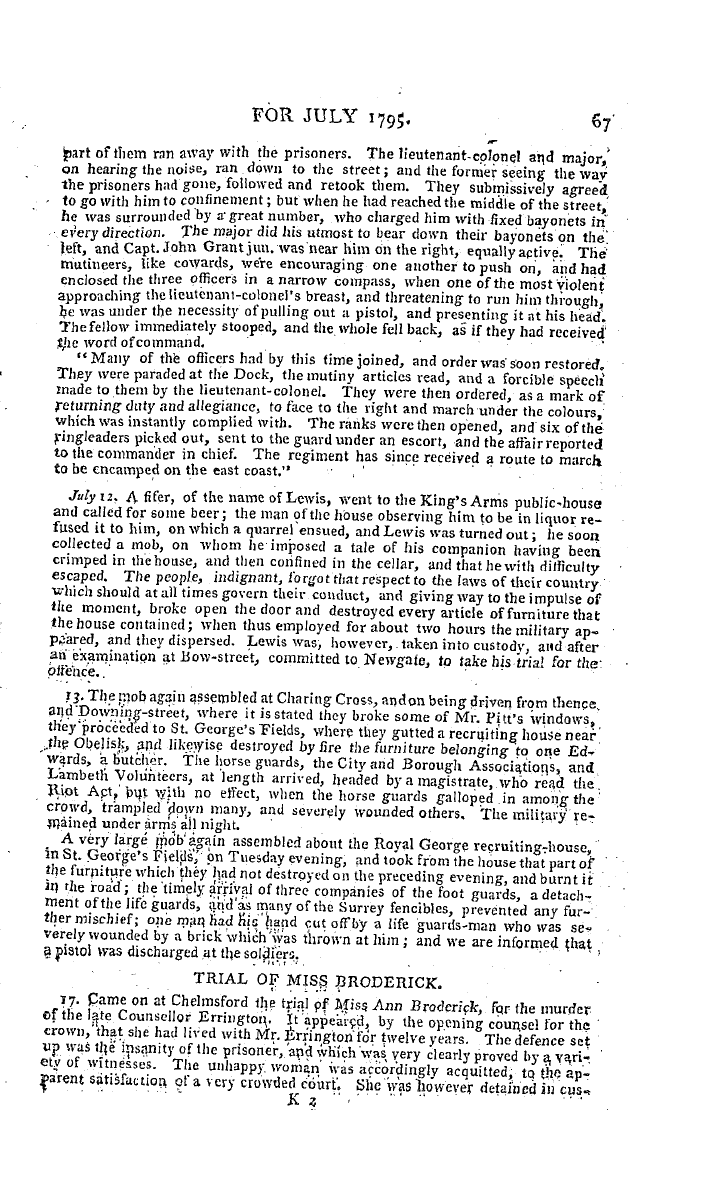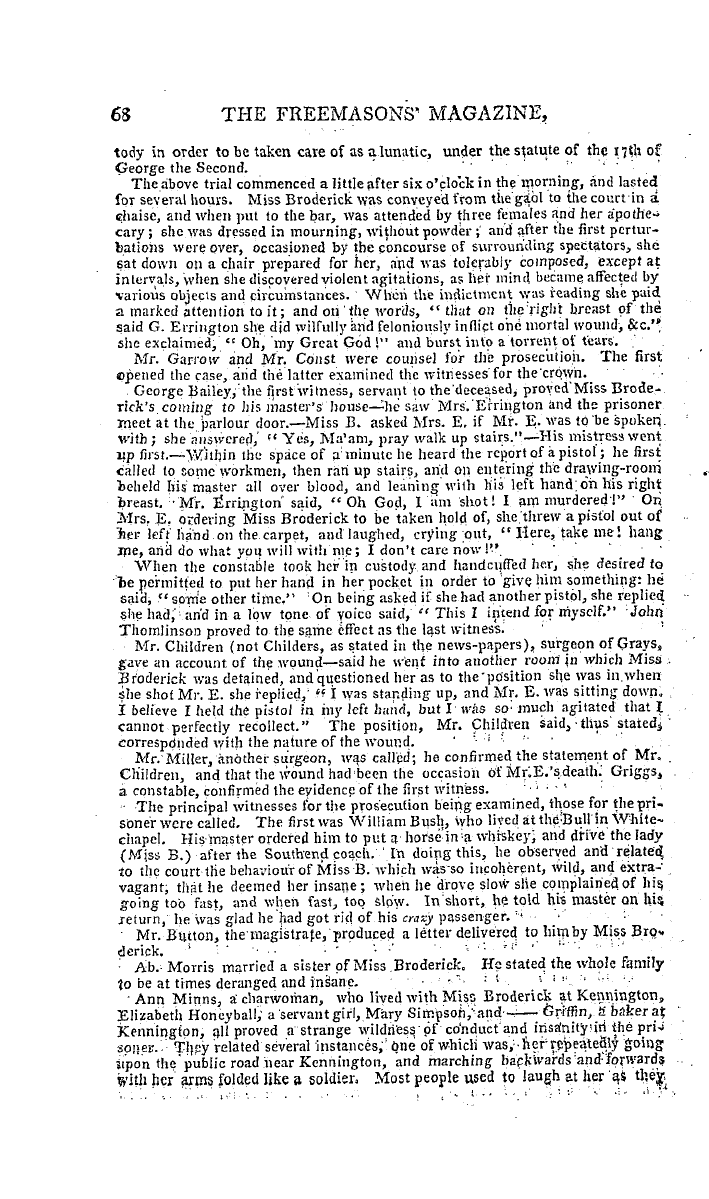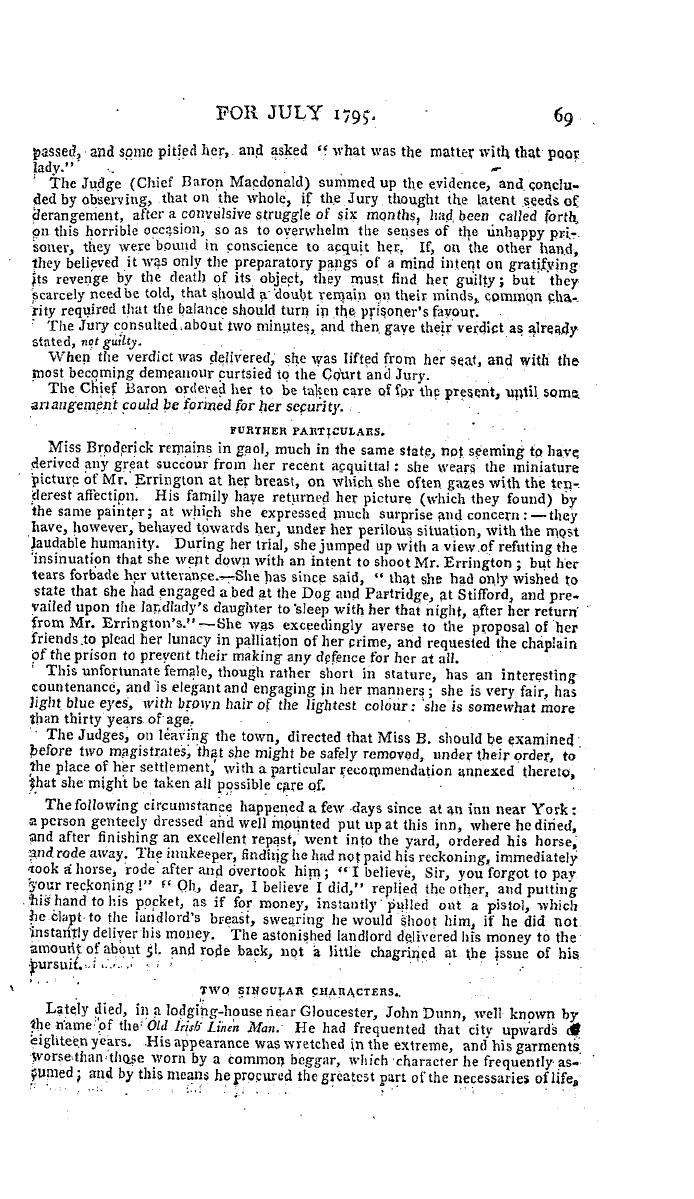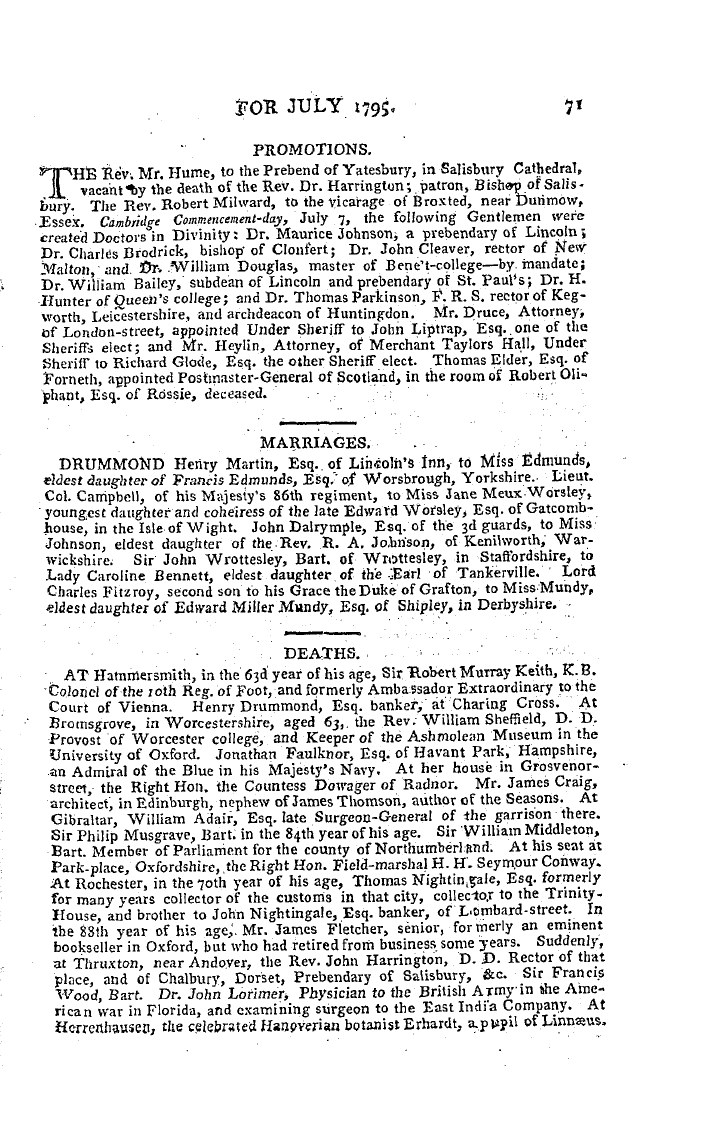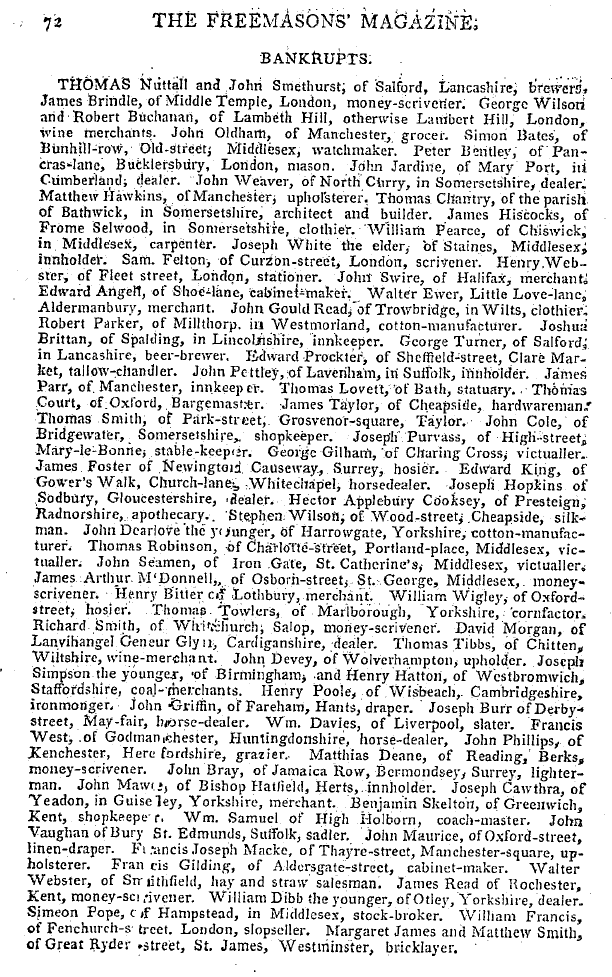-
Articles/Ads
Article TO SIR GEORGE STAUNTON, BART. ← Page 3 of 6 →
Note: This text has been automatically extracted via Optical Character Recognition (OCR) software.
To Sir George Staunton, Bart.
it rose itself off the center the full thickness of the blade of a knife from one butment to the other , and is , I suppose , the first arc , h of ninety feet span that ever struck itself . I have already mentioned that the spaces between the ends of the arch and the butments were filled up with chunces of wood , and those rather in a damp state ; ' and though we rammed them as close as we
could , we could not ram them so close as their drying , and the wei ght of the arch , or rib , especially when loaded , would be capable of doing ; and we had now to observe the effects which the yielding and pressing up of the wood , and which corresponds to the giving way of the butments , so generally fatal to stone arches , would have upon this . .
We loaded the rib with six tons of pig iron , beginning at the center and proceeding both ways , which is twice the wei ght of the iron in the rib , as I shall hereafter more particularly mention . This had not the least visible effect on the strength of the arch , but it pressed the wood home so as to gain in three or four days , together with the drying and shrinking of the woodabove a quarter of an inch at each end
, , and consequently the chord or span of the arch was lengthened above half ati inch . As this lengthening was more than double the feather of the key-stone in a stone arch of these dimensions , such an alteration at the butments would have endangered the safety of a stone arch , while it produced on this no other than the proper mathematical effects To evidence thisI had recourse to the cord still swinging on the wall
, from which the curve of the arch was taken . I set the cord to go feet span , and five feet for the height of the arch , and marked the curve on the wall . . I then removed the ends of the cord horizontally something more than a quarter of an inch at each end . The cord should then describe the exact catenarian curve which the rib had assumed '
by the same lengthening at the butments , that is , the rising of the cord should exactly cp-rrespond to the lowering of the arch , which it did through all their corresponding ordinates . The cord had rose something- more than two inches at the center , diminishing to nothing , each way , and the arch had descended the same quantity and in the same proportion . I much doubt whether a stone arch , could it be constructed as flat as thiscould sustain such an alteration ; andon
, , the contrary , I see no reason to doubt but an aych on this construction and dimensions , or corresponding thereto , might be let clown to half its height , or as far as it would descend , with safety , I say " as far as it would descend , " , because the construction renders it exceed-, ing probable that there-is a point beyond which it would not descend , but retain itself independent of butments ; but this cannot be explained
but by a sight of the arch itself . In four or five days , the arch having gained nearly all it could gain on the wood , except what the wood would lose by a summer ' s drying , the lowering of the arch began to be scarcely visible . The weight still continues on . it , to which I intend to add more , and there is not the least visible effect on the perfect curvature or strength of lite arch . ' C z .
Note: This text has been automatically extracted via Optical Character Recognition (OCR) software.
To Sir George Staunton, Bart.
it rose itself off the center the full thickness of the blade of a knife from one butment to the other , and is , I suppose , the first arc , h of ninety feet span that ever struck itself . I have already mentioned that the spaces between the ends of the arch and the butments were filled up with chunces of wood , and those rather in a damp state ; ' and though we rammed them as close as we
could , we could not ram them so close as their drying , and the wei ght of the arch , or rib , especially when loaded , would be capable of doing ; and we had now to observe the effects which the yielding and pressing up of the wood , and which corresponds to the giving way of the butments , so generally fatal to stone arches , would have upon this . .
We loaded the rib with six tons of pig iron , beginning at the center and proceeding both ways , which is twice the wei ght of the iron in the rib , as I shall hereafter more particularly mention . This had not the least visible effect on the strength of the arch , but it pressed the wood home so as to gain in three or four days , together with the drying and shrinking of the woodabove a quarter of an inch at each end
, , and consequently the chord or span of the arch was lengthened above half ati inch . As this lengthening was more than double the feather of the key-stone in a stone arch of these dimensions , such an alteration at the butments would have endangered the safety of a stone arch , while it produced on this no other than the proper mathematical effects To evidence thisI had recourse to the cord still swinging on the wall
, from which the curve of the arch was taken . I set the cord to go feet span , and five feet for the height of the arch , and marked the curve on the wall . . I then removed the ends of the cord horizontally something more than a quarter of an inch at each end . The cord should then describe the exact catenarian curve which the rib had assumed '
by the same lengthening at the butments , that is , the rising of the cord should exactly cp-rrespond to the lowering of the arch , which it did through all their corresponding ordinates . The cord had rose something- more than two inches at the center , diminishing to nothing , each way , and the arch had descended the same quantity and in the same proportion . I much doubt whether a stone arch , could it be constructed as flat as thiscould sustain such an alteration ; andon
, , the contrary , I see no reason to doubt but an aych on this construction and dimensions , or corresponding thereto , might be let clown to half its height , or as far as it would descend , with safety , I say " as far as it would descend , " , because the construction renders it exceed-, ing probable that there-is a point beyond which it would not descend , but retain itself independent of butments ; but this cannot be explained
but by a sight of the arch itself . In four or five days , the arch having gained nearly all it could gain on the wood , except what the wood would lose by a summer ' s drying , the lowering of the arch began to be scarcely visible . The weight still continues on . it , to which I intend to add more , and there is not the least visible effect on the perfect curvature or strength of lite arch . ' C z .




























































